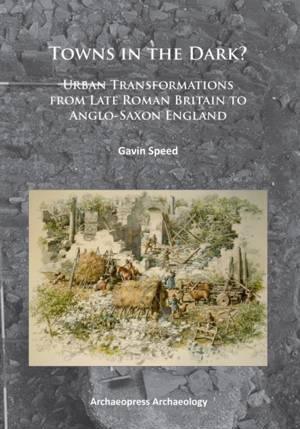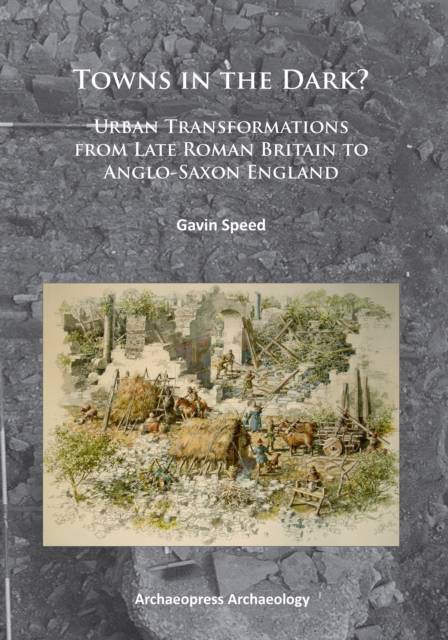
- Afhalen na 1 uur in een winkel met voorraad
- Gratis thuislevering in België vanaf € 30
- Ruim aanbod met 7 miljoen producten
- Afhalen na 1 uur in een winkel met voorraad
- Gratis thuislevering in België vanaf € 30
- Ruim aanbod met 7 miljoen producten
Zoeken
Towns in the Dark
Urban Transformations from Late Roman Britain to Anglo-Saxon England
Gavin Speed
Paperback | Engels
€ 45,95
+ 91 punten
Omschrijving
What became of towns following the official end of 'Roman Britain' at the beginning of the 5th century AD? Did towns fail? Were these ruinous sites really neglected by early Anglo-Saxon settlers and leaders? Developed new archaeologies are starting to offer alternative pictures to the traditional images of urban decay and loss revealing diverse modes of material expression, of usage of space, and of structural change. The focus of this book is to draw together still scattered data to chart and interpret the changing nature of life in towns from the late Roman period through to the mid-Anglo-Saxon period. The research centres on towns that have received sufficient archaeological intervention so that meaningful patterns can be traced. The case studies are arranged into three regional areas: the South-East, South-West, and Midlands. Individually each town contains varying levels of archaeological data, but analysed together these illustrate more clearly patterns of evolution. Much of the data exists as accessible but largely unpublished reports, or isolated within regional discussions. Detailed analysis, review and comparisons generate significant scope for modelling 'urban' change in England from AD 300-600. 'Towns in the Dark' dispels the simplistic myth of outright urban decline and failure after Rome, and demonstrates that life in towns often did continue with variable degrees of continuity and discontinuity.
Specificaties
Betrokkenen
- Auteur(s):
- Uitgeverij:
Inhoud
- Aantal bladzijden:
- 205
- Taal:
- Engels
Eigenschappen
- Productcode (EAN):
- 9781784910044
- Verschijningsdatum:
- 28/07/2014
- Uitvoering:
- Paperback
- Formaat:
- Trade paperback (VS)
- Afmetingen:
- 208 mm x 292 mm
- Gewicht:
- 716 g

Alleen bij Standaard Boekhandel
+ 91 punten op je klantenkaart van Standaard Boekhandel
Beoordelingen
We publiceren alleen reviews die voldoen aan de voorwaarden voor reviews. Bekijk onze voorwaarden voor reviews.








